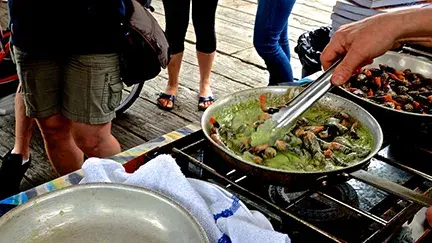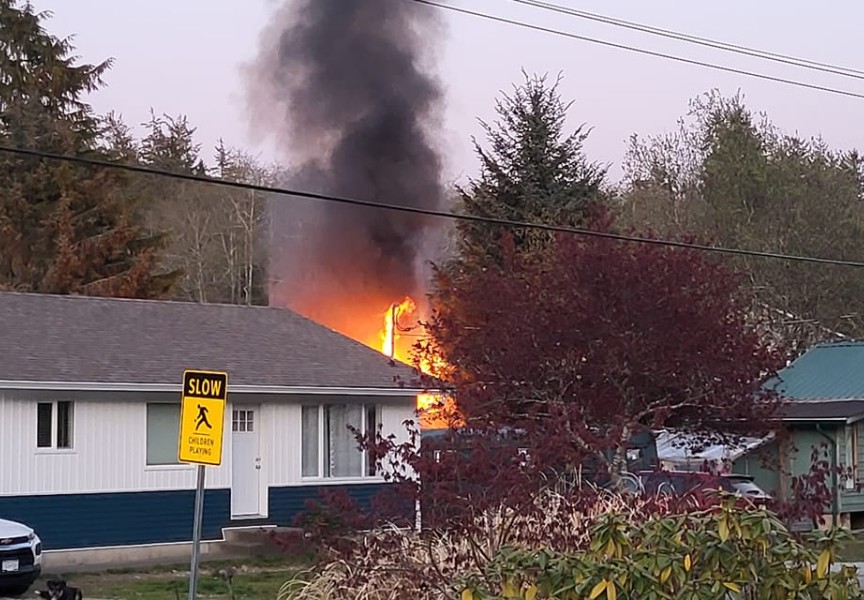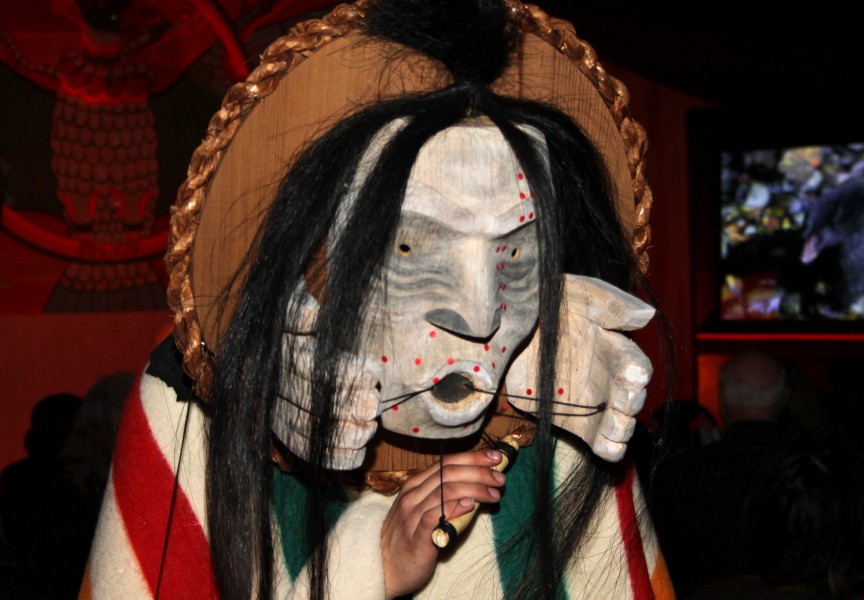The c̓aʔinwa gooseneck barnacle fishery is now Ocean Wise-recommended after undergoing a rigorous independent assessment by the Vancouver Aquarium’s sustainable seafood program.
Using results from the assessment, SeaChoice has also deemed the gooseneck barnacle a “Best Choice” option—the highest ranking available for a fishery.
“This thorough analysis is an acknowledgment of Nuu-chah-nulth First Nations as strong stewards of sea resources today just as they’ve been for thousands of years,” said Alex Gagne, T’aaq-wiihak fisheries coordinator.
Working with the Monterey Bay Aquarium's renowned Seafood Watch program, Laurenne Schiller, Ocean Wise researcher, undertook a science-based seafood assessment for the fishery that is managed by the five T'aaq-wiihak Nations—Ahousaht, Ehattesaht/Chinehkint, Hesquiaht, Mowachaht/Muchalaht and Tla-o-qui-aht.
Schiller reviewed scientific documentation on gooseneck barnacles and applied Seafood Watch sustainability criteria to create her report. The next step was to have it reviewed by experts familiar with the species and fishery.
The assessment criteria are based on how fishing affects the species being fished, its impact on other species collected at the same time as bycatch (i.e., in the case of gooseneck barnacles, mussels, damaged and juvenile goosenecks and acorn barnacles), on habitats, and the overall effects of the fishery on the ecosystem. The review also takes into consideration how well the fishery is managed.
“The designation means that the fishery is well-managed and that gooseneck barnacles collected by hand in British Columbia are a Best Choice because there are low concerns with the population’s health, bycatch of other species or the fishery’s impact on its surroundings,” said Lana Gunnlaugson, SeaChoice National Manager. The report was released at the start of July 2015 and both Ocean Wise and SeaChoice have since added it to their recommended seafood lists.
“I was really impressed with the fishery’s assessment plans and current monitoring,” said Schiller. “The fishery is managed based on different sites and every site has a specific catch quota based on barnacles available for harvest. This is the best approach for a fishery like this.”
One of the biggest challenges of the study was adapting Seafood Watch assessment criteria in the context of a community fishery.
“Most Seafood Watch assessments are for industrial-scale fisheries, yet you can’t use the same criteria for a smaller fishery that you do for one that brings in, for example, a million tons of tuna annually,” said Schiller. She adds that the gooseneck barnacle fishery is a test case in that sense.
“This was the first fisheries assessment of its kind that Ocean Wise has conducted of a community fishery and we foresee doing more assessments on community fisheries throughout Canada.”
Receiving a SeaChoice “Best Choice” and Ocean Wise recommendation will help bring market recognition to gooseneck barnacles, a local, well-managed and sustainable fishery.
Upcoming Ha’oom Events
September 13: Tasting a demo of Ha’oom gooseneck barnacles; Gulf Georgia Cannery, Richmond.
September 27: A SlowFish event focused on local, sustainable fisheries; Granville Island, Vancouver.
For more information about these events, please contact Uu-a-thluk Central Region Biologist Candace Picco at Candace.Picco@nuuchahnulth.org.
*SeaChoice Seafood Ranking
Best Choice (Green): This species is currently fished/harvested sustainably and represents a best choice. Enjoy green choices in moderation while supporting responsible fishing and coastal livelihoods.
Some Concerns (Yellow): Seafood that should be consumed infrequently, or when a green choice is not available. There are conservation concerns with the current populations or practices in this fishery.
Avoid (Red): Do not purchase these fish until the industry improves their practices so the populations recover. Red-listed seafood comes from sources that have a combination of problems – habitat damage, by-catch, poor management, low populations, can be easily harmed by fishing or may be listed by governments as Endangered.
*Material provided courtesy of SeaChoice.







